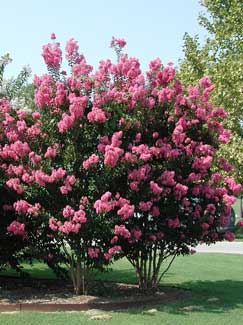Butterfly Garden
See what plants are good for
attracting butterflies to your garden.
There are several topics to cover in this "In the Garden" section of the Cooperative Extension website. From native plants to butterfly gardening, to the reference library compiled of questions and answers, you will find a wealth of information related to gardening in Arkansas.
See what plants are good for
attracting butterflies to your garden.

Find out what Crape Myrtle Bark Scale is and how to treat the problem.